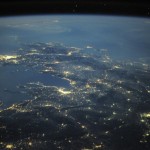Skywatching: Seeing and Understanding Cosmic Wonders with Professor Alex Filippenko – The Great Courses (Summary)
If you love science, the stars and sky like me… you have to do this course. Most of the vids are already on here and I’m sure if you’re resourceful you’ll find other ways to watch them. For me the lightning, zodiac, eclipses and celestial sights courses were tops.
Bonus Video – Stargazing: A Guide To The Heavens
1 Day and Night Skies across All Distances
Embark on a brief tour of the grandeur of the sky above your head—both near and far—and get a better idea of the broad range of breathtaking objects and phenomena everyone can enjoy.
2 The Blue Sky, Clouds, and Lightning
Why is the color of the sky blue? How does polarization work, and how can it help you see objects in the sky better? What’s the difference between cirrocumulus and cirrostratus clouds? Does lightning truly never strike the same place twice? Get answers to these and a host of other questions.
Amazon #ads
3 The Rainbow Family—Sunlight and Water
Rainbows. Coronas. Cloud iridescence. Strengthen your understanding and appreciation of the science behind these and other colorful phenomena that occur due to the fascinating interaction of water with sunlight.
4 Solar Halos—Sunlight and Ice Crystals
Travel higher up in the atmosphere and discover what happens when sunlight interacts not with raindrops but with frozen ice crystals. After learning how these delicate crystals are formed, you’ll examine stunning photography that captures the wonders of everything from solar halos and mock suns to glitter paths and sun pillars.
5 The Colors of Sunrise and Sunset
What is the science behind a majestic sunrise or dramatic sunset? Find out in this lecture on the colors and features that accompany these breathtaking, everyday events. Professor Filippenko reveals the science behind—and offers skywatching tips for—blue moons, the “belt of Venus,” alpenglow, green flashes, and more.
6 Bright Stars, Constellations, and the Zodiac
Stars and constellations are some of the most commonly sought-after features of the night sky. Here, learn how to spot such iconic star patterns as the Big Dipper; make sense of the zodiacal constellations; locate some of the sky’s brightest stars; and learn just why it is that stars twinkle.
7 Viewing the Planets and Their Motions
How can you tell the difference between a planet and a star? When is the best time to see planets such as Mercury and Jupiter? What’s the difference between retrograde and prograde planetary motion? Get the answers to these and other questions in this lecture on spotting each of our solar system’s planets.
8 The Moon, Phases, and Lunar Eclipses
Looking up at the moon has always been a favorite pastime on romantic evenings. But there’s actually so much more to see and experience when you look with a trained eye. Here, learn everything about the moon’s craters and seas, follow its distinct lunar phases, ponder the “moon illusion,” and explore lunar eclipses.
9 Satellites, Comets, and Meteors
Artificial satellites such as the International Space Station and the Hubble Space Telescope. Famous comets such as Hale-Bopp, Hyakutake, and McNaught. Brilliant meteor showers and storms, including the Perseids and Leonids. Revel in the science of understanding objects that orbit Earth or the sun and the beauty of witnessing such objects move across our sky.
10 Observing Solar Activity and Earth’s Auroras
Explore the inner workings of the sun; learn to look safely at amazing features such as sunspots, solar prominences, and captivating coronas you can see for yourself with the right knowledge and equipment. Also, learn how coronal mass ejections give rise to space weather (including solar wind), possible satellite disruptions and power outages on Earth, and the shimmering auroras of the northern and southern lights.
11 Solar Eclipses—Marvelous Coincidences
In this gorgeously illustrated lecture, follow the spectacular stages of a total solar eclipse, including first contact, totality, and the two “diamond ring” stages. Also, get tips on how best to view these marvelous celestial events—and where and when you can see them in the coming years.
Amazon #ads
12 Celestial Sights When the Night Is Darkest
In this final lecture, Professor Filippenko reveals some of the breathtaking stars, galaxies, and other phenomena you can see while skywatching under extremely dark conditions, and how to find them. Also, learn how the night sky has given us clues about the birth of the universe—and even our origins.






